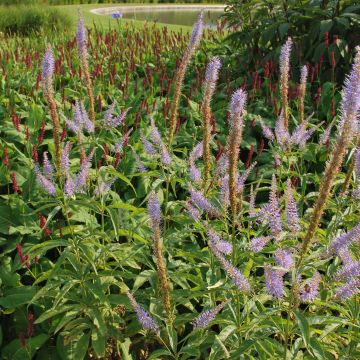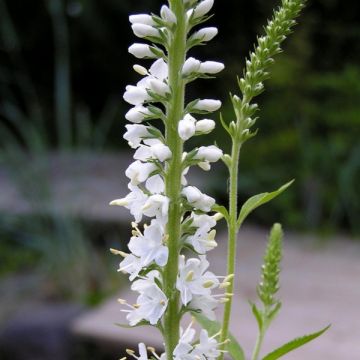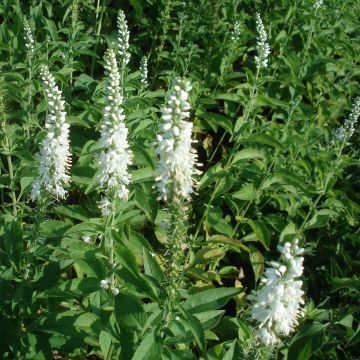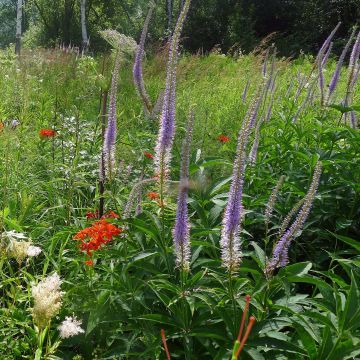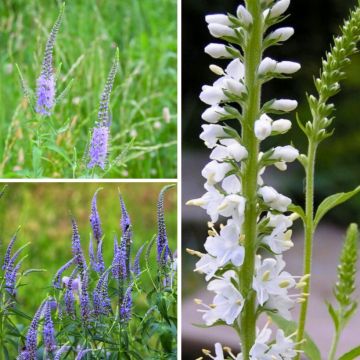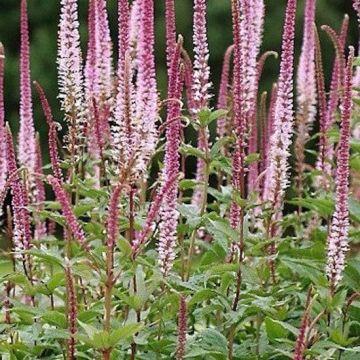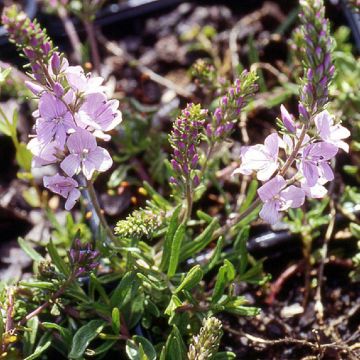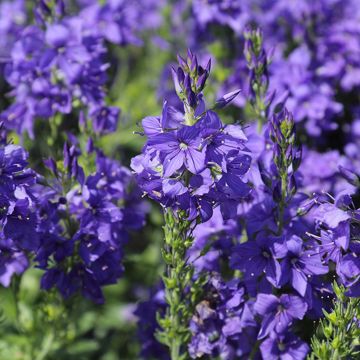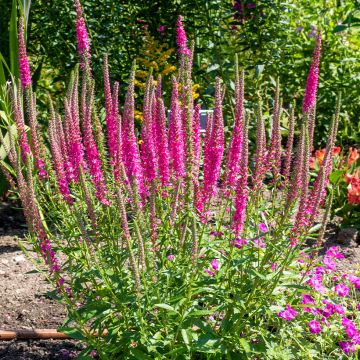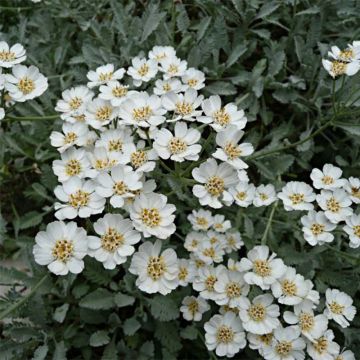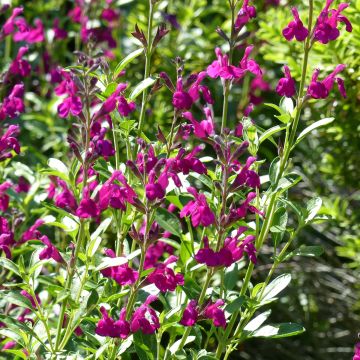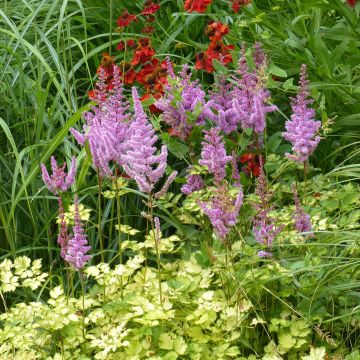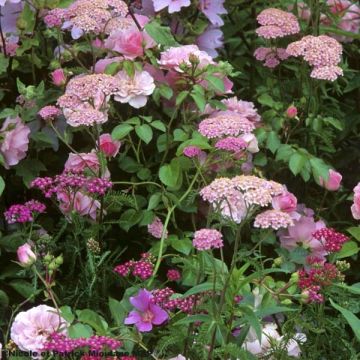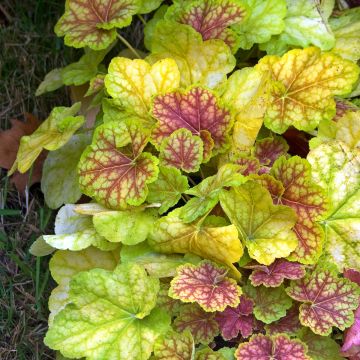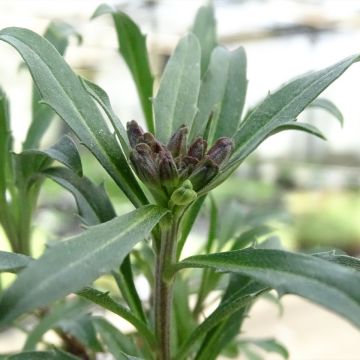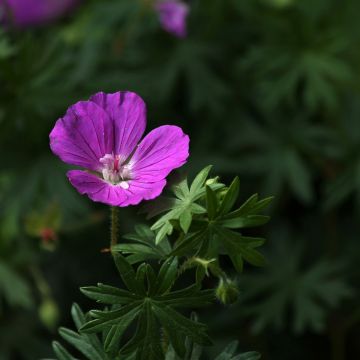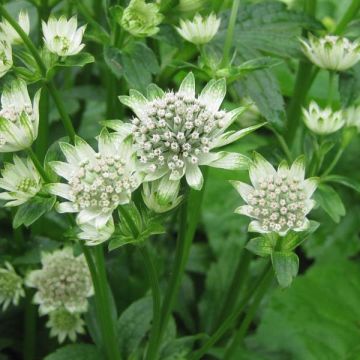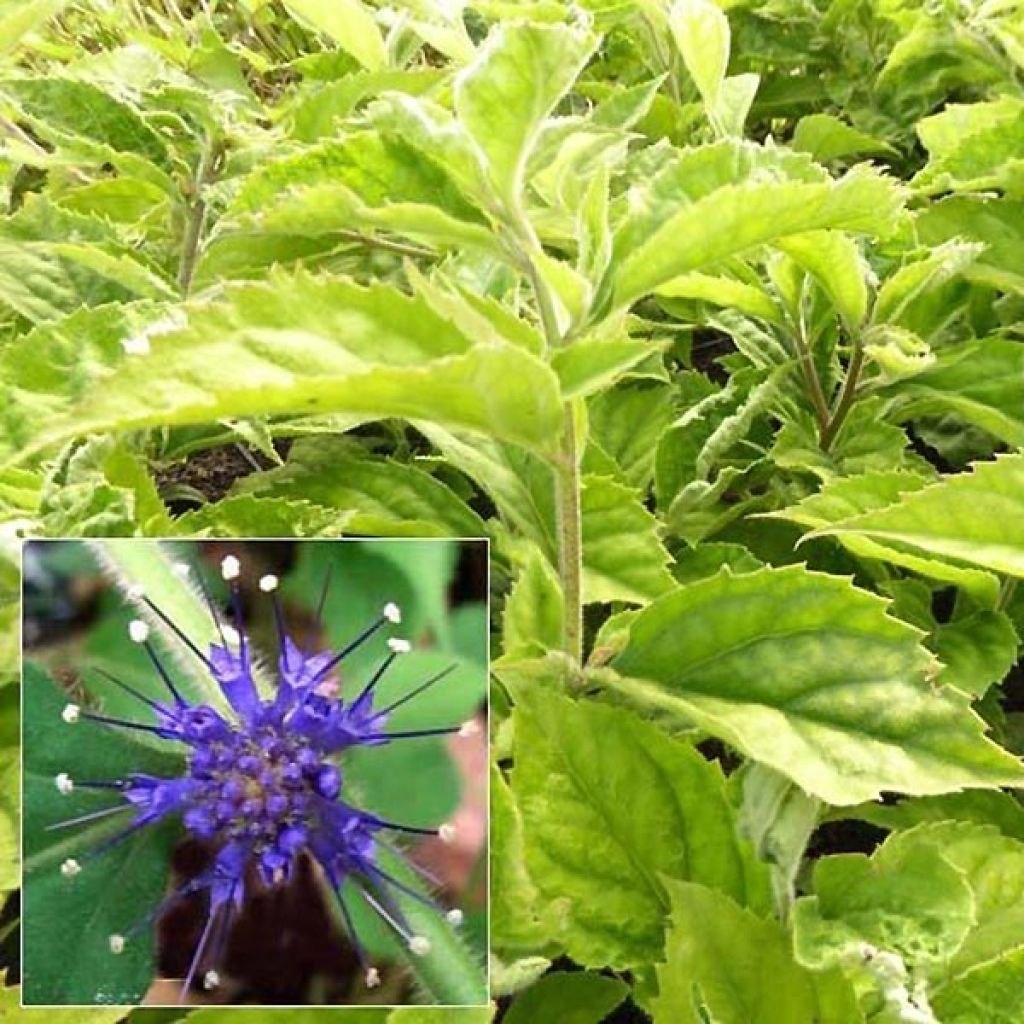

Veronicastrum villosulum
Veronicastrum villosulum
Veronicastrum villosulum
Culver's root, Virginia Speedwell, Bowman's Root
This plant carries a 12 months recovery warranty
More information
We guarantee the quality of our plants for a full growing cycle, and will replace at our expense any plant that fails to recover under normal climatic and planting conditions.
From €5.90 for pickup delivery and €6.90 for home delivery
Express home delivery from €8.90.
Does this plant fit my garden?
Set up your Plantfit profile →
Description
Veronicastrum villosulum is a rather unusual representative of this genus of perennial plants, better known for the imposing Veronicastrum virginicum. It is a creeping plant with long stems that are initially upright and then trailing and capable of rooting upon contact with the soil, much like a periwinkle. Its small deep bluish-purple flowers bloom in late summer, accompanied by densely hairy foliage that takes on beautiful bronze to red-purple tones in autumn. This semi-evergreen, hardy and undemanding plant is an effective, original and elegant ground cover for the base of shrubs or woodland settings. Its naturally trailing habit will also be highlighted if planted above a wall.
Veronicastrum villosulum is native to Japan, specifically the island of Honshu. It is resistant to cold winters (-20°C). In the wild, it can be found in forests and groves or sometimes hanging on rocks, at an altitude between 300 and 500 m (984 and 1640ft). This perennial develops green stems covered with short hairs, which trail before reaching a height of 50 cm (20in), and root upon contact with the ground. Its rapid growth allows it to cover the ground quite densely within about 2 years, discouraging the appearance of weeds. The foliage is semi-evergreen, disappearing completely in a severe winter. The leaves of this Veronicastrum are 4 to 7 cm (2 to 3in) long and 2 to 5 cm (1 to 2in) in width, ovate to lanceolate and hairy with toothed edges. The unassuming flowering is late, generally from late August to early October, in the axils of the leaves. It takes the form of small glomerules or pompoms, 1 to 4 cm (0 to 2in) in size, composed of tiny, deep violet flowers, adorned with prominent yellow stamens. After flowering, the foliage takes on beautiful colours ranging from yellow to pink and purple-violet if the plant receives some sunlight. In winter, the leaves that have remained attached to the stems are light green with a beautiful purple reverse.
Veronicastrum villosulum is a good ground cover, useful for the base of deciduous trees and shrubs, provided that the soil is not too dry. It is a good plant for partial shade or light shade and will appreciate some evening or morning sun, and humus-rich soil. Place it in an exotic-looking group under Fatsia, Aralia or at the base of bamboo. It will also thrive in a slightly moist and shaded rockery, or planted on top of a wall, alongside adventives or the yellow strawberry Waldsteinia ternata, which are also hardy.
Report an error about the product description
Veronicastrum villosulum in pictures
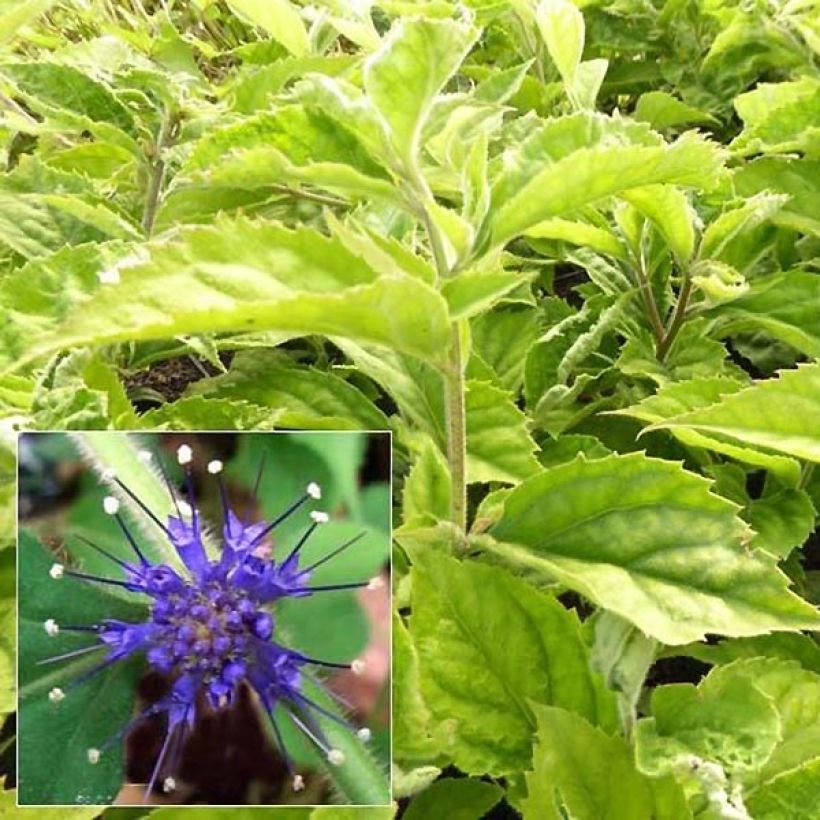

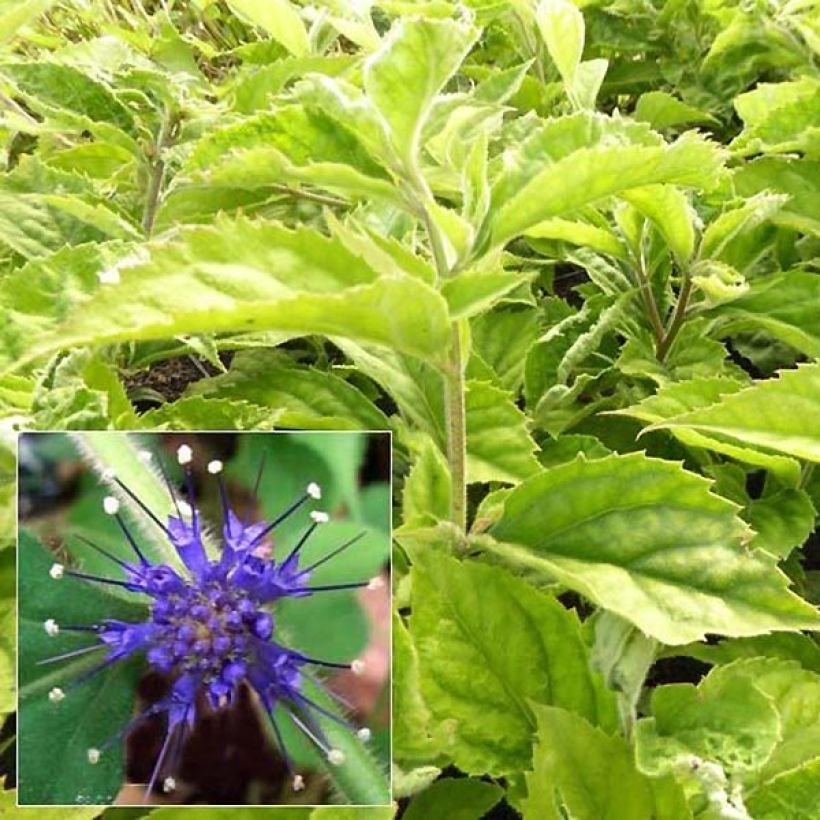

Flowering
Foliage
Plant habit
Botanical data
Veronicastrum
villosulum
Scrophulariaceae
Culver's root, Virginia Speedwell, Bowman's Root
East Asia
Other Veronica - Speedwell
Planting and care
Plant Veronicastrum villosulum in spring or autumn, preferably in humus-bearing, moist, fertile and well-drained soil. A regular garden soil lightened and enriched with compost and coarse sand should be suitable. Avoid arid conditions and soils that dry out too easily. It prefers dappled sunlight or partial shade, tolerating morning or evening sun well. In full shade or overly dense shade, the autumn colours will be much less vibrant. Water regularly in dry summers.
Planting period
Intended location
Care
This item has not been reviewed yet - be the first to leave a review about it.
Summer flowering perennials
Haven't found what you were looking for?
Hardiness is the lowest winter temperature a plant can endure without suffering serious damage or even dying. However, hardiness is affected by location (a sheltered area, such as a patio), protection (winter cover) and soil type (hardiness is improved by well-drained soil).

Photo Sharing Terms & Conditions
In order to encourage gardeners to interact and share their experiences, Promesse de fleurs offers various media enabling content to be uploaded onto its Site - in particular via the ‘Photo sharing’ module.
The User agrees to refrain from:
- Posting any content that is illegal, prejudicial, insulting, racist, inciteful to hatred, revisionist, contrary to public decency, that infringes on privacy or on the privacy rights of third parties, in particular the publicity rights of persons and goods, intellectual property rights, or the right to privacy.
- Submitting content on behalf of a third party;
- Impersonate the identity of a third party and/or publish any personal information about a third party;
In general, the User undertakes to refrain from any unethical behaviour.
All Content (in particular text, comments, files, images, photos, videos, creative works, etc.), which may be subject to property or intellectual property rights, image or other private rights, shall remain the property of the User, subject to the limited rights granted by the terms of the licence granted by Promesse de fleurs as stated below. Users are at liberty to publish or not to publish such Content on the Site, notably via the ‘Photo Sharing’ facility, and accept that this Content shall be made public and freely accessible, notably on the Internet.
Users further acknowledge, undertake to have ,and guarantee that they hold all necessary rights and permissions to publish such material on the Site, in particular with regard to the legislation in force pertaining to any privacy, property, intellectual property, image, or contractual rights, or rights of any other nature. By publishing such Content on the Site, Users acknowledge accepting full liability as publishers of the Content within the meaning of the law, and grant Promesse de fleurs, free of charge, an inclusive, worldwide licence for the said Content for the entire duration of its publication, including all reproduction, representation, up/downloading, displaying, performing, transmission, and storage rights.
Users also grant permission for their name to be linked to the Content and accept that this link may not always be made available.
By engaging in posting material, Users consent to their Content becoming automatically accessible on the Internet, in particular on other sites and/or blogs and/or web pages of the Promesse de fleurs site, including in particular social pages and the Promesse de fleurs catalogue.
Users may secure the removal of entrusted content free of charge by issuing a simple request via our contact form.
The flowering period indicated on our website applies to countries and regions located in USDA zone 8 (France, the United Kingdom, Ireland, the Netherlands, etc.)
It will vary according to where you live:
- In zones 9 to 10 (Italy, Spain, Greece, etc.), flowering will occur about 2 to 4 weeks earlier.
- In zones 6 to 7 (Germany, Poland, Slovenia, and lower mountainous regions), flowering will be delayed by 2 to 3 weeks.
- In zone 5 (Central Europe, Scandinavia), blooming will be delayed by 3 to 5 weeks.
In temperate climates, pruning of spring-flowering shrubs (forsythia, spireas, etc.) should be done just after flowering.
Pruning of summer-flowering shrubs (Indian Lilac, Perovskia, etc.) can be done in winter or spring.
In cold regions as well as with frost-sensitive plants, avoid pruning too early when severe frosts may still occur.
The planting period indicated on our website applies to countries and regions located in USDA zone 8 (France, United Kingdom, Ireland, Netherlands).
It will vary according to where you live:
- In Mediterranean zones (Marseille, Madrid, Milan, etc.), autumn and winter are the best planting periods.
- In continental zones (Strasbourg, Munich, Vienna, etc.), delay planting by 2 to 3 weeks in spring and bring it forward by 2 to 4 weeks in autumn.
- In mountainous regions (the Alps, Pyrenees, Carpathians, etc.), it is best to plant in late spring (May-June) or late summer (August-September).
The harvesting period indicated on our website applies to countries and regions in USDA zone 8 (France, England, Ireland, the Netherlands).
In colder areas (Scandinavia, Poland, Austria...) fruit and vegetable harvests are likely to be delayed by 3-4 weeks.
In warmer areas (Italy, Spain, Greece, etc.), harvesting will probably take place earlier, depending on weather conditions.
The sowing periods indicated on our website apply to countries and regions within USDA Zone 8 (France, UK, Ireland, Netherlands).
In colder areas (Scandinavia, Poland, Austria...), delay any outdoor sowing by 3-4 weeks, or sow under glass.
In warmer climes (Italy, Spain, Greece, etc.), bring outdoor sowing forward by a few weeks.

































